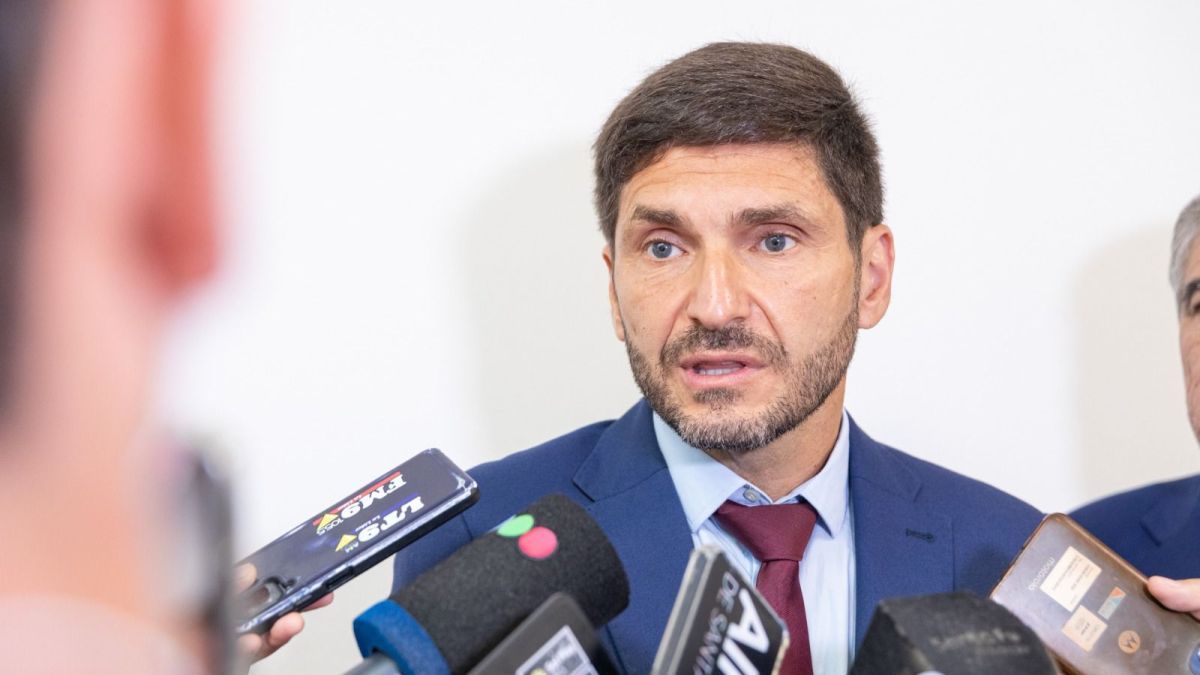He Governor of Santa Fe, Maximiliano Pullaromanaged to get his bill approved in less than a month pension reform projectdespite the fierce opposition of some state unions, such as the teachers’ union. The initiative, which aims to reduce the deficit of the Pension Fund, according to the government, was submitted to the Legislature in the last week of August. The changes in the system affect the percentage of contributions that workers will make, the number of years they will contribute, the age at which they will be able to access retirement and the declaration of emergency.
According to the justification of the Casa Gris, the modifications seek to reduce the deficit of the Caja by between 20% and 30%, which, projected for 2024, is $430,000 million, but if the debts with the system that the Nation has are added, that figure would be around $700,000 million. So far, the claims of Pullaro to the Casa Rosada to transfer the funds that correspond to it. Santa Fe is one of the 13 provinces with provincial pension funds under its charge which were not transferred to the Nation in the 1990s, as the rest of the administrations did.
The declaration of Emergency of the Pension Systemwhich contained the Reform of the Pension System for Public Employees and Officialsentered the Legislative Branch on August 29 and on September 5, with treatment on the table, obtained half sanction in the Senate with the positive votes of United to Change Santa Fe and Uniteand against the Justicialist Party. It was 14 votes to 4, with the absence with notice of the Peronist senator Armando Traferri, who in commissions also expressed himself against the ruling party. This Thursday it was the turn of the House of Representatives, where the official project was supported by 23 votes in favor, 9 against and 11 abstentions. And first of all, it established the emergency for two years, with the possibility of extending it for one more.
Embed – https://publish.twitter.com/oembed?url=https://twitter.com/CacuCandido/status/1834290401735573819&partner=&hide_thread=false
Despite a violent minority encouraged by a privileged minority that wants everything to remain the same, the proposed pension reform was approved in the Legislature after the work of a commission that listened to all sectors.
We have a responsibility to preserve…
— Juan Cruz Candido (@CacuCandido) September 12, 2024
The approved rule, which involved changes negotiated with related blocs in the Senate and in the House of Representatives, included the creation of a Emergency Pension Monitoring Commission The committee will be made up of four senators, six deputies, two officials from the Executive Branch and special guests. “The Executive Branch, through whomever is appropriate, will guarantee the participation of representatives of public sector trade associations.” It does not clarify who, but it is an option for the voices of state unions to be added. Another point that was agreed upon was to reduce from two years to one year the extension of the pension emergency that the Executive may decree, provided for in article 1.
The approval also establishes a solidarity contribution (mandatory) For the beneficiaries of the system who earn more, a deduction will be made from their salaries. That is, provincial retirees who receive the equivalent of more than three minimum pensions will have to make a solidarity contribution to the Fund during the next two years, with the possibility of extending this measure for one more year. The amount to be deducted will be the equivalent of 2% of their salary.
On the other hand, it was decided that the contribution of active personnel will be increased, that is, currently everyone contributes 14% to the system but from now on a new calculation ranging from 15.5% to 21%, which will depend on the income received by the agent, under the principle that whoever earns more, allocates more to the regime. This includes all workers and officials of the three powers.
Another issue that caused unrest in the teaching profession was the age at which retirement can be achieved. In reality, there are no changes in the ordinary retirement process. Women can retire from 57 years oldprovided they have accredited 30 years of teaching service. Men, from 60 years of age, also with 30 years of service. But the approved project grants the provincial Executive the possibility of changing the retirement age, if the Nation modifies the pension system and raises the floor. In any case, the Executive’s decision can only be made while the pension emergency lasts. And regarding secondary and tertiary level teachers, they must prove 30 teaching hours, at least, during the last 10 years of work to access the optional regime.
Finally, the approved system set maximum limits on pensions. From now on, a maximum limit is established Maximum limit for pensions of 20 minimum wages -Currently, the highest pensions are 32 times higher than the minimum pensions. No one will be able to collect more than $7,600,000 retirementan amount that will grow as the salaries of active workers increase.
Against
One of the voices against the decision of his peers was that of Peronist provincial deputy Leandro Busattowho stated on the social network X that what happened in the House of Representatives “is an unprecedented institutional scandal. The reform is not only illegitimate. If what some legislators claim regarding the violation of the regulations is true, the reform is illegal.”
Embed – https://publish.twitter.com/oembed?url=https://twitter.com/leandrobusatto/status/1834283010990244124&partner=&hide_thread=false
What is happening in @CamaraDipSF It is an unprecedented institutional scandal. The reform is not only illegitimate, but also what some claim
Lawmakers regarding the violation of the regulation is true, the reform is illegal— Leandro Busatto (@leandrobusatto) September 12, 2024
The Secretary General of the Government, the radical Juan Cruz Cándido, came out to counter this opinion and said: “Despite a violent minority incited by a privileged minority that wants everything to remain the same, the pension reform that was proposed after the work of a commission that listened to all sectors was approved in the Legislature.”
Source: Ambito
I am a 24-year-old writer and journalist who has been working in the news industry for the past two years. I write primarily about market news, so if you’re looking for insights into what’s going on in the stock market or economic indicators, you’ve come to the right place. I also dabble in writing articles on lifestyle trends and pop culture news.




